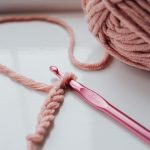Are Tri Glides the Secret to Perfect Fabric Loops?
Discover the precision and control Tri Glides offer in crafting flawless fabric loops.
This concise guide delves into the mastery of utilizing Tri Glides to achieve impeccable results, covering their benefits, types, incorporation techniques, sewing tips, and troubleshooting common issues.
Whether you're a seasoned artisan seeking to elevate your fabric loop game or a newcomer eager to grasp this essential skill, this exploration of Tri Glides will equip you with the knowledge and expertise needed to create flawless fabric loops.
Key Takeaways
- Tri glides are versatile and can be used in sewing and crafting projects.
- They offer increased loop security and prevent fabric loops from slipping or coming undone.
- Tri glides come in different materials, such as plastic, metal, and nylon, each with its own benefits.
- When incorporating tri glides into projects, it is important to ensure proper positioning, strong stitching, and precise adjustment.
Understanding Tri Glides
If you're new to sewing or crafting, you may be wondering what tri glides are and how they can enhance your fabric loops. Tri glides are incredibly versatile and find applications in a wide range of sewing and crafting projects. These small yet durable pieces are made from various materials, including plastic, metal, and nylon, ensuring their longevity and ability to withstand different levels of strain.
In the world of sewing and crafting, tri glides are commonly used to create adjustable straps, belts, and fabric loops. Their versatility allows for easy adjustment, making them perfect for items such as bags, backpacks, and pet accessories. Additionally, tri glides are often used in outdoor gear and clothing, providing a reliable and secure way to adjust the fit of garments and equipment.
When considering the materials used in tri glides, it's essential to prioritize durability. Metal tri glides are known for their strength and resilience, making them ideal for heavy-duty applications. On the other hand, plastic and nylon tri glides offer durability while being lightweight and resistant to corrosion, making them suitable for a wide range of projects.
Benefits of Using Tri Glides
Tri glides offer increased loop security, making them a reliable choice for securing fabric in place. They also allow for easy adjustment and tightening, providing versatility and convenience in various applications.
The benefits of using tri glides are evident in their ability to provide a secure, adjustable solution for fabric loops.
Increased Loop Security
To achieve increased loop security when working with fabric, you can experience the benefits of using Tri Glides. Tri Glides offer several advantages that contribute to enhanced loop security:
- Adjustability: Tri Glides allow for easy adjustment of the fabric loops, ensuring a snug and secure fit.
- Prevention of Slipping: By providing a secure anchor point, Tri Glides prevent the fabric loops from slipping or coming undone during use.
- Distribution of Tension: Tri Glides evenly distribute tension along the fabric loops, reducing the risk of strain and potential failure.
Easy Adjustment and Tightening
When working with fabric loops, achieve easy adjustment and tightening by utilizing Tri Glides, ensuring a snug and secure fit for your project. Tri Glides provide a simple and effective way to adjust the length and tightness of fabric loops, making them an essential tool for various projects. By understanding different adjustment techniques, you can master the art of creating perfectly sized loops for your specific needs. Whether you are working on straps, belts, or webbing, Tri Glides allow for swift and effortless adjustments, saving you time and effort. Additionally, they contribute to loop reinforcement, preventing slippage and maintaining the desired tension. The table below highlights the benefits of using Tri Glides for easy adjustment and tightening:
| Benefits of Using Tri Glides |
|---|
| Easy length adjustment |
| Secure tightening |
| Prevents slippage |
| Enhances loop reinforcement |
Types of Tri Glides
When it comes to types of tri glides, understanding the different varieties available can help you choose the best tri glide for your specific needs.
From plastic to metal, there are various materials to consider, each with their own advantages and applications.
Tri Glide Varieties
You can find various types of tri glides that are designed for different applications and materials. When choosing the right tri glide for your specific needs, consider the following varieties:
- Metal Tri Glides: These are durable and well-suited for heavy-duty applications, providing excellent strength and reliability.
- Plastic Tri Glides: Ideal for lightweight applications, these are cost-effective and resistant to corrosion, making them suitable for outdoor use.
- Adjustable Tri Glides: Offering versatility, these can be easily adjusted to accommodate various strap widths, providing flexibility in usage.
Understanding the functionality and alternatives of each type will help you make an informed decision based on your specific requirements. Whether you need strength, cost-effectiveness, or adjustability, there's a tri glide variety that's perfect for your fabric loops.
Best Tri Glide
To identify the best tri glide for your fabric loops, explore the various types available and assess their suitability for your specific application and material needs.
When evaluating tri glide features, consider factors such as the material it's made of, the width and thickness of the fabric it will accommodate, and the type of load it will bear.
Metal tri glides offer durability and strength, making them suitable for heavy-duty applications, while plastic tri glides are lightweight and resistant to corrosion, ideal for outdoor or water-related uses.
Additionally, there are tri glide alternatives such as sliders and D-rings that may be better suited for certain projects.
How to Incorporate Tri Glides
Wondering how to incorporate tri glides into your fabric loops for a perfect finish? When it comes to using tri glides for creating fabric loops, there are a few key techniques to keep in mind. Here's how to seamlessly integrate tri glides into your projects:
- Proper Positioning: Ensure the tri glide is positioned correctly within the loop fastener to guarantee a secure and adjustable fit.
- Secure Stitching: Utilize strong, durable stitching techniques to firmly attach the tri glide to the fabric, preventing any slippage or loosening over time.
- Adjustment Precision: When incorporating tri glides as strap adjusters, pay attention to the placement and tension to achieve the desired level of tightness or looseness in the fabric loop.
Tips for Sewing With Tri Glides
When sewing with tri glides, ensure precise positioning and secure stitching to effectively incorporate them into your fabric loops. Start by marking the exact placement of the tri glides on your fabric to ensure they're evenly spaced and aligned. Use sewing pins or fabric markers to indicate where the tri glides will be attached.
When stitching the tri glides onto the fabric, employ sewing techniques such as backstitching at the beginning and end of each strap to reinforce the attachment and prevent unraveling. Additionally, consider using a heavier-duty needle and thread suitable for the fabric manipulation involved in creating loops with tri glides.
When sewing, maintain a consistent stitch length and tension to ensure the strength and durability of the fabric loops. Take care to avoid sewing over the metal hardware of the tri glides, as this can damage your sewing machine needle.
Troubleshooting Common Tri Glide Issues
Why are your fabric loops slipping or loosening when using tri glides, and how can you fix this issue?
When encountering common issues with tri glides, troubleshooting techniques can help ensure that your fabric loops stay secure and in place. Here are some common issues and troubleshooting techniques to address them:
- Slipping fabric loops: If you find that your fabric loops are slipping when using tri glides, one common issue could be that the fabric isn't securely held in place. To troubleshoot this, double-check that the fabric is properly threaded through the tri glide and adjust the tension as needed to ensure a snug fit.
- Loosening over time: Over time, fabric loops may loosen due to movement and usage. To address this common issue, consider applying a small amount of fabric glue or using a fabric-safe adhesive to secure the end of the fabric after threading it through the tri glide. This can help prevent loosening and maintain the desired fit.
- Inconsistent tension: Inconsistent tension in fabric loops can lead to uneven or unreliable results. To troubleshoot this issue, take extra care to ensure that the fabric is evenly tensioned and securely fastened within the tri glide, making adjustments as necessary to achieve consistent tension throughout the loop.
Project Ideas Using Tri Glides
Consider incorporating tri glides into your next sewing project to enhance the functionality and versatility of your fabric loops. Tri glides are functional accessories that offer innovative solutions for creating various loop variations. Here are some project ideas to inspire you to make the most of tri glides in your sewing endeavors:
| Project Idea | Description | Benefit |
|---|---|---|
| Adjustable Bag Straps | Use tri glides to create adjustable straps | Easily customize strap length |
| Dog Collars | Incorporate tri glides for adjustable fit | Comfortable and secure for pets |
| Fabric Belts | Add tri glides for adjustable waistbands | Versatile and comfortable clothing accessory |
| Keychain Lanyards | Utilize tri glides for adjustable length | Convenient and customizable lanyards |
| Hammock Straps | Make hammock straps with tri glides | Easily adjust hammock tension |
These project ideas showcase the creative potential of tri glides in enhancing the functionality and versatility of fabric loops. By incorporating these innovative accessories into your sewing projects, you can explore a wide range of loop variations while adding practical benefits to your creations.
Frequently Asked Questions
What Are Some Common Mistakes to Avoid When Using Tri Glides?
When using tri glides, common mistakes to avoid include improper sizing, fabric incompatibility, and lack of tension control. Ensure proper sizing, compatible fabric, and precise tension for successful use of tri glides.
Can Tri Glides Be Used With Stretchy Fabrics?
Yes, tri glides can be used with stretchy fabrics in sewing and outdoor projects. To ensure success, avoid common mistakes, maintain the equipment, and explore creative ideas for heavy duty projects.
Are There Any Specific Maintenance Tips for Tri Glides to Ensure They Last Longer?
To ensure longevity and optimal performance, here are some maintenance tips for your tri glides. Regularly check for any signs of wear and tear, especially when used with stretchy fabrics or on heavy duty projects. Keep them clean and lubricated for smooth operation.
Can Tri Glides Be Used for Outdoor or Heavy-Duty Projects?
Yes, Tri Glides are suitable for outdoor applications and heavy-duty projects. They provide secure and adjustable fastening for various materials. Their durability and strength make them a reliable choice for demanding tasks.
Are There Any Creative or Unique Ways to Incorporate Tri Glides Into Sewing Projects?
Incorporate tri glides into sewing projects by exploring creative applications and unique projects. Experiment with alternative uses and innovative designs to elevate your work. Tri glides offer versatility and can bring a fresh perspective to your creations.
- Gray Kevlar Fabric: Industrial and Tactical Applications - June 21, 2025
- Fire-Resistant Kevlar Fabric ASTM Standards and Uses - June 21, 2025
- Fake Kevlar Fabric: Identifying Counterfeits and Legal Issues - June 21, 2025







